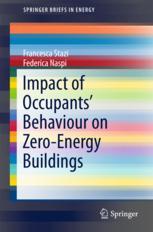

Most ebook files are in PDF format, so you can easily read them using various software such as Foxit Reader or directly on the Google Chrome browser.
Some ebook files are released by publishers in other formats such as .awz, .mobi, .epub, .fb2, etc. You may need to install specific software to read these formats on mobile/PC, such as Calibre.
Please read the tutorial at this link: https://ebookbell.com/faq
We offer FREE conversion to the popular formats you request; however, this may take some time. Therefore, right after payment, please email us, and we will try to provide the service as quickly as possible.
For some exceptional file formats or broken links (if any), please refrain from opening any disputes. Instead, email us first, and we will try to assist within a maximum of 6 hours.
EbookBell Team

4.4
82 reviewsThis book highlights the importance of human behaviour in the building design process, with a focus on the construction of zero-energy buildings. It reports on and discusses the strategies the authors have adopted to develop behavioural models, and explains how to integrate them into building design. The analyses and findings presented in the book are supported by novel experimental data derived from building monitoring projects carried out by the authors’ research group. Further, the book suggests key methodologies and modelling approaches.
The authors subsequently address occupants’ behaviour in zero-energy buildings from an energy perspective. They investigate many different aspects of the interactions between users and buildings devices, from assessing the triggering factors of occupants’ behaviours, to discussing modelling and simulation approaches. Methods for acquiring and analysing experimental data are presented, as well as a discussion on objective and subjective factors that trigger occupants’ behaviour. Other content includes: experimental investigations from real case studies to assess occupants’ interaction with building devices; an assessment of the driving factors that trigger human actions to identify the key parameters in the behavioural models; and critical suggestions on monitoring and modelling approaches to optimise data acquisition and modelling methods. The guidelines presented here will allow designers and researchers to improve the accuracy of their simulations of buildings energy performance, and support both building design and management processes. It will be of particular use to researchers involved in the development of behavioural models, as it presents experimental data and a comprehensive overview of behavioural modelling. The book will also be of interest to students who are studying the behavioural component of integrated building design.